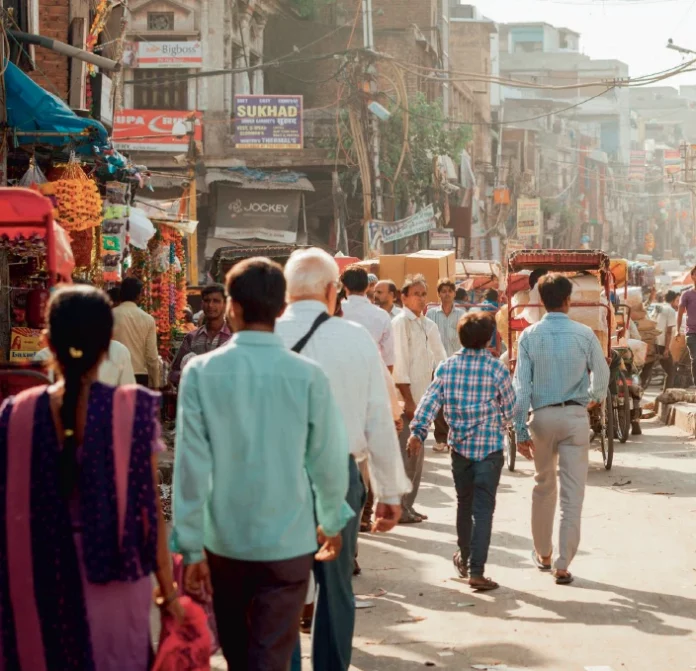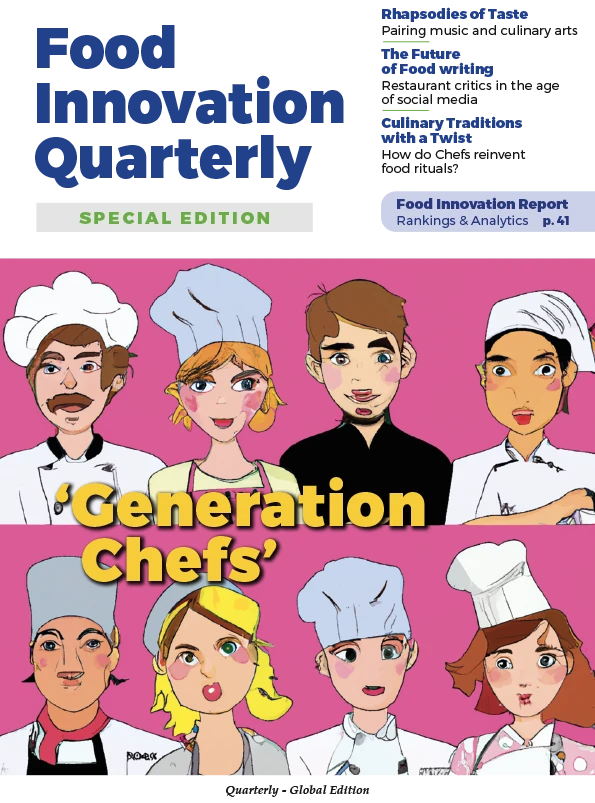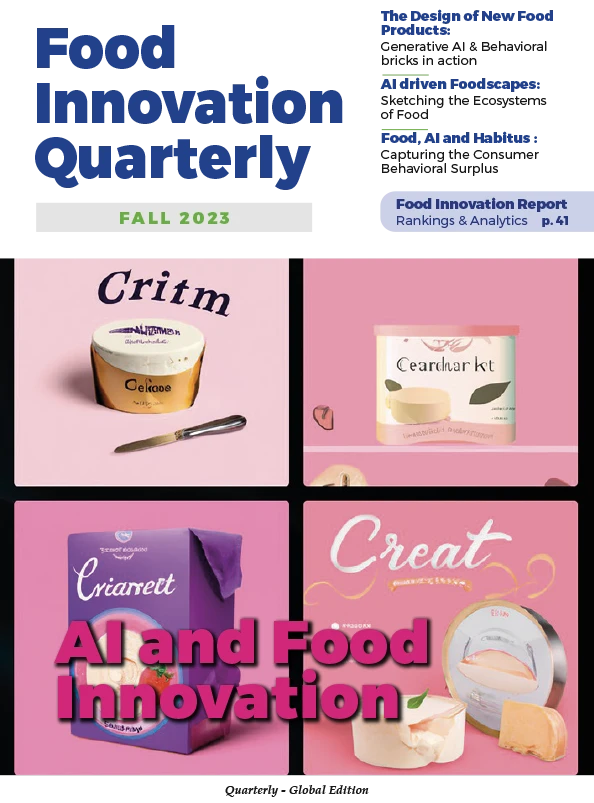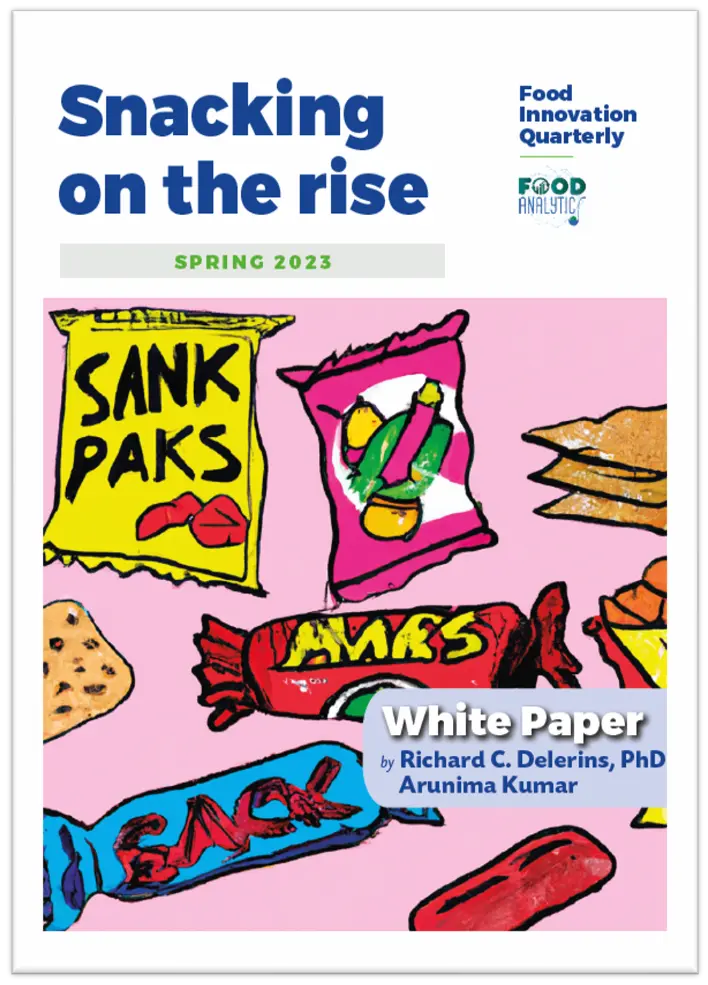The buzzing national capital of India is a long beloved food haven. Generations of foodies have not only continued to savour the traditional food from all across the country here but the city has given some fusion foods their much-deserved big break.
‘Food has had a massive impact on shaping who I am today‘
Belonging to a generation of self-proclaimed food enthusiasts, I am no different and often find myself either eating, cooking, photographing, watching or reading about food. Additionally, as an Indian, hailing from a collectivist society that dines communally & prides on its geographically induced abundance of flavours, food has had a massive impact on shaping who I am today. Therefore, in my expat life in Paris, on days when I miss home, I probably think about my family for 10 seconds and about the delectable treats in my city, Delhi, for hours on end (Sorry mom!).
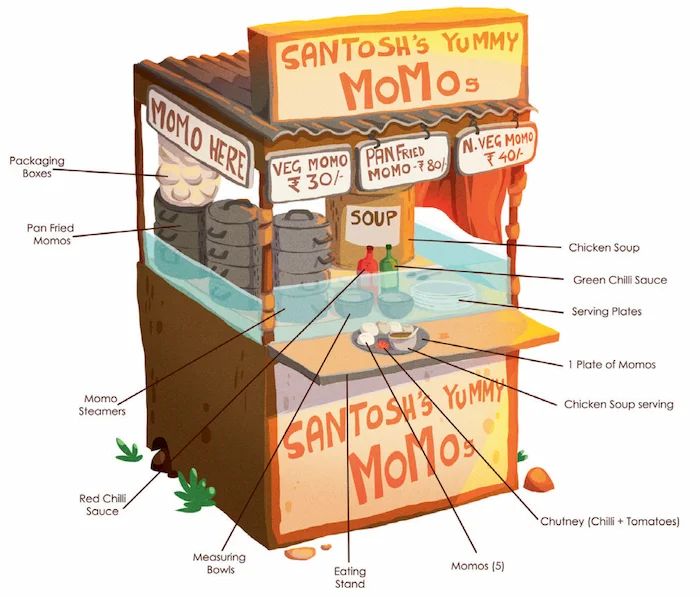
Strangely enough, what I miss isn’t curry or chicken tikka masala, firstly, because I’m a vegetarian, another very common breed of humans found in India, and secondly because my generation across the world has been much more exposed to a diverse and an ever so booming gastronomical scene than the ones before.
Hence, for me, as is the case for many Delhi expats and also for millions of locked-down north Indians, missing food = missing ‘Momos’ and other ‘Chin-dian’ concoctions. Before I go on rambling about these, let me first tell you what they are.
Dump(l)ing some facts
Momos are traditionally Tibetan dumplings, based on a similar concept as the Chinese Jiaoxi, Georgian Khinkali, Korean Mandou, Japanese Gyoza, Polish Pierogi, Turkish Manti, you get the drift. Obviously, each of these is unique in their own way and has adapted itself to the taste buds of those who consume it. The basic idea however is similar, moist bulbs of meat or vegetable stuffing wrapped in dough rolled out into beautiful shapes, usually dipped in a sauce.
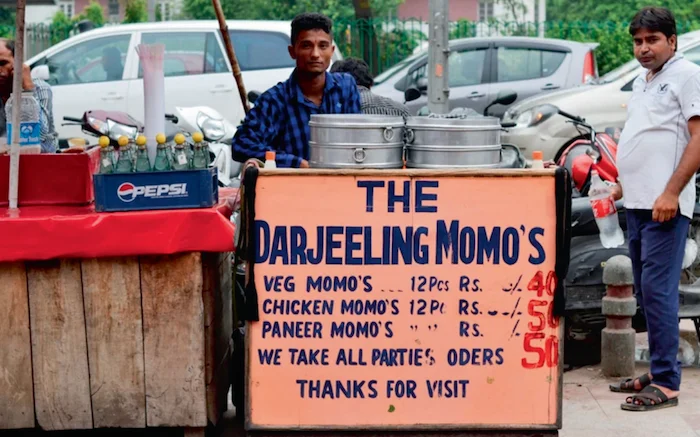
There’s often a debate about where these tiny flavour bombs originated and the most plausible explanation is that the Mongols are responsible for the dumpling spread via Genghis Khan’s invasions through far-east, central and west Asia, right through eastern and north-eastern Europe. Leaving the technicalities aside, it is undeniable that momos have now become a staple in many Indians’ diets. This wasn’t always the case though given that India came fashionably late to the pancontinental momo party.
While one version of the momo certainly came to India with the Dalai Lama and his Tibetan people in 1959, it stayed within the Tibetan community typically residing in the mountainous part of India closer to the northern and north eastern border. It wasn’t until the late 90s and early 2000s that the Indians in the plains and the peninsula were exposed to the dish.
Chin-dian food on the other hand, refers to the highly Indianized Chinese food or the Sino-Asian cuisine mostly popular in north India gradually making its way to the south. The modern fusion momo in New Delhi can be classified under this category along with Honey Chilli Potatoes, Chilli Paneer, Chilli Gobi, Manchurian, Gobi Manchurian, Chilli Chicken and several other insanely popular Indian takes on Chinese recipes. Unlike momos, this class of foods was introduced to India by the Chinese migrant community (predominantly Hakka) in Kolkata who mostly came to British India in the 1700s in search of Buddhist teachings and set permanent camp creating a Chinatown in the then ‘Calcutta’, the most accessible metropolitan city by land from China. These migrants were smart enough to figure out the Indian taste buds and ‘masala-fy’ their traditional dishes. Eventually, the dishes adapted well to the vegetarians, even birthing some that would be completely unknown to a Chinese person such as the ‘Manchurian’ and its varieties.
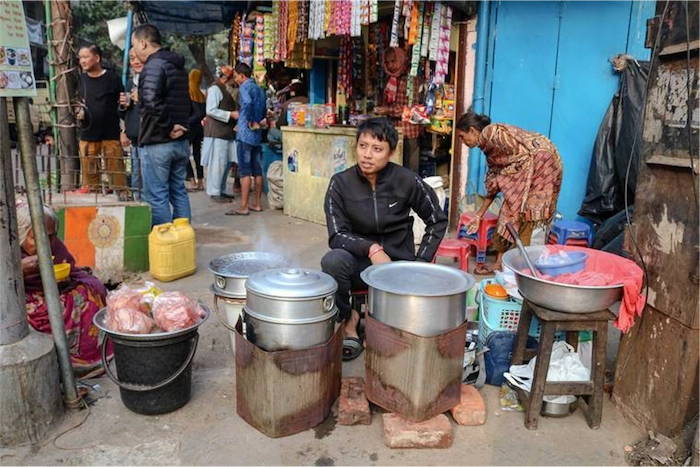
Though these foods have been present in the Indian culinary scene for a few decades, the millennials, such as I, particularly enjoy this cuisine in the mainstream life far more than our parents did. So, how has the meaning and significance of this cuisine changed over the years and what is its claim to fame?
1990s : The rise of a clandestine cuisine
Up until I was a pre-teen, I had never seen or heard about momos. The first momo stall in Delhi was opened in the southern part of the city in 1994 by Dolma Aunty. But the owner did not have it as easy as she or other momo vendors do today. The Momo wasn’t popular at all because unlike most street food in Delhi, it wasn’t fried. It was steamed which made people uncomfortable and led them to believe that it was uncooked and raw. Secondly, the street food stall was owned by a woman while in the regular, this job was for men.
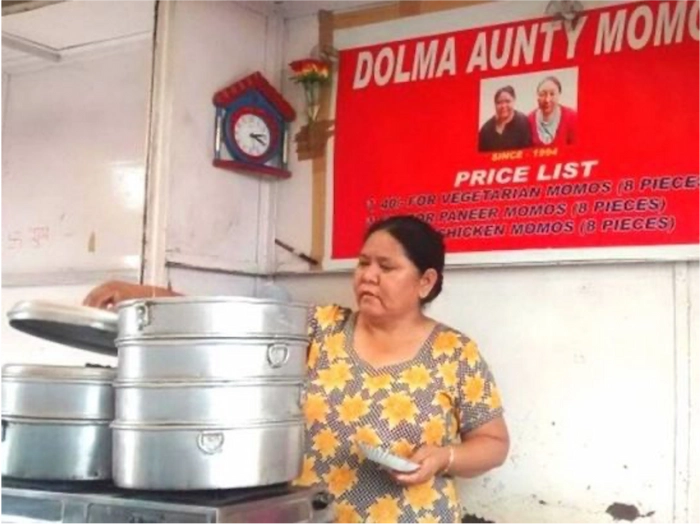
Dolma Aunty Momos, the first momo stall in New Delhi
On top of that, she did not speak Hindi because she was a migrant from Tibet. Despite the adversities, she and her sister did not lose hope and today, ‘Dolma Aunty Momos’ is the most popular momos spot in all of Delhi.
In the late 90s and 2000s, more and more refugees from Tibet and even from Nepal, started settling down in Delhi and opening up their own businesses of selling and even supplying momos to other businesses.
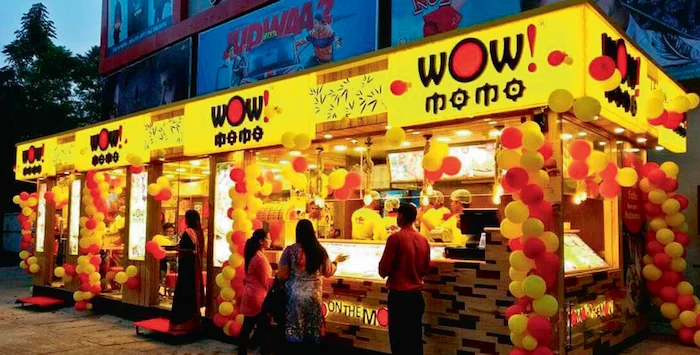
Chindian food was definitely well recognised in most Indian households but only as a cuisine you’d go out to eat either on the streets or at a ‘Family Restaurant’. Almost all local residential area markets had one or several ‘Chinese Vans’ mostly operated by Nepalese or Tibetan migrants that served ‘Hakka Noodles’ and ‘American Chop Suey’ to consume street style just like the traditional Chaat. I remember that if we had been particularly good that week, our parents would reward us with ‘Chinese Van’ noodles as weekend treats. Even more peculiar was the notion of serving ‘Chow Mein’ at children’s birthday parties. If you ask any north Indian millennial what was the one dish at their childhood birthday parties, they would say chow mein. In my family, going out for food was mostly a bi-monthly affair and we would usually go to family restaurants that would serve both Indian and Chinese food because the kids hardly ever wanted to order Indian. Haldiram’s, which is the most popular Indian street foods chain in the country and even abroad, also served some Sino-Indian dishes on their menu.
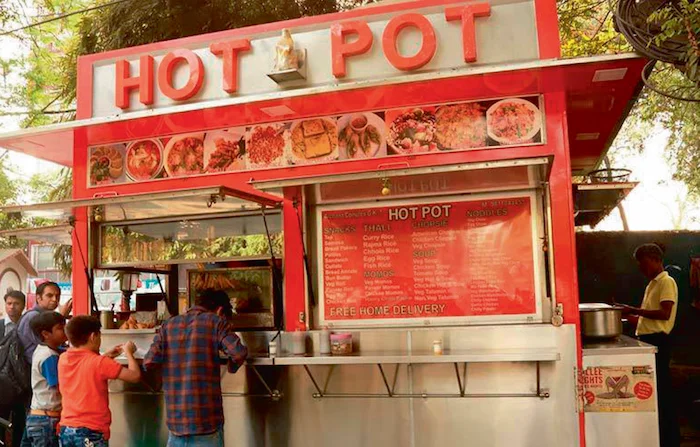
However, Bercos was the one specialised restaurant in Chinese (& Thai) food that made it through all these years without a single Indian dish on their menu to fall back on. Then considered an upscale establishment, only frequented on very special occasions or only by the affluent families, Bercos is now a much more accessible restaurant, with one of its franchises even at the Delhi International Airport.
2000s: Momo Evangelism
In the mid and late 2000s, ‘momo evangelism’ had already spread like wild fire, first in Nepal via Tibet and then through the Nepalese, in Delhi. As more and more refugees gained the opportunity to get into business rather than taking up odd-jobs, more and more stalls started cropping up across Delhi.
The Momo was cheap, easy to eat and somewhat healthier than the deep-fried street foods of Delhi. Possibly more than the momo itself, the umami taste of the spicy chilli chutney appealed more to the palate of the Indians. This is when Wow! Momo first opened a Chindian fast food chain in 2008.
Slightly costlier than the street style momos, it offers great fusion variety such as momos cooked in ‘Schezwan’ sauce (another Chindian creation).
It has won several awards over the years and is the most successful Indian Chinese fast-food chain in the country.
As for other Chindian food, more and more ‘pan Asian’ specialised restaurants started opening up across the city as the cuisine started becoming a commonality for the masses rather than just ‘going-out food’. New and innovative dishes in this food category such as Crispy Honey Chilli Potatoes, Cauliflower Manchurian, the Chinese Thali were all widely accepted by the consumers to the point that these dishes became a staple at North Indian Weddings.
The 2010s and now : The new street food champions
In 2012, I was at Delhi University where new eateries appeared at an exponential rate near both the north and the south campus. In the south, ‘Chowrighee Lane’ was the ultimate food haven. Satya Niketan, where this ‘lane’ is located, serves some of the best ‘Tandoori’ & ‘Malai’ momos in the city. If you can’t tell, this is the extremely Indianized version of momos smoked in a tandoor or lathered in thick cream, topped with oodles of chaat masala. ‘QDs’ was our go-to spot to enjoy these on the days we felt a bit fancy. On other days, we’d grab these momos and other such fusion food from the street side stall and enjoy them on our huge campus.
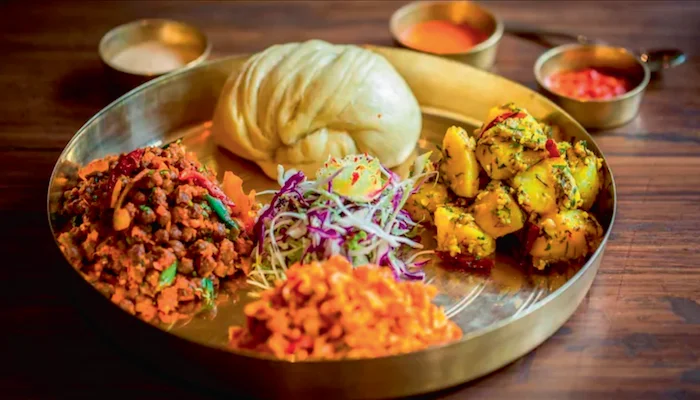
For those in the north campus, the food scene was even more exciting. The thing that made me the most envious was the proximity of the locality called Majnu
ka Tila or the Monastery Market to the North Campus. This market still keeps the traditional Tibetan vibe alive with older women creating their authentic delicacies. It was a daily hangout spot for most college going students because of the deliciousness and the affordability of the authentic Tibetan food served here.
I would like to specially mention ‘Laphing’ which is a noodle soup dish made out of mung bean noodles served in a very spicy soup, garnished with coriander and sometimes peanuts. They have a slippery texture, are mostly served cold and cost half a dollar. Dilli Haat, an open-air food plaza which has food stalls from the different states in India each serving regional delicacies, is also big on momos, always served with a soup, uniquely available here. This area is usually bustling with tourists because apart from food, it is also home to many craftsmen and artisans’ fabric and clothing shops.
Yeti, The Himalayan Kitchen, is a more upscale place trying to keep the Tibetan authenticity alive in the city. I was only introduced to ‘Tingmo’, a soft spiral of pillow-y bread here and I sincerely thank my stars for it.
Taking it upscale
As eating out several times a week became more of a norm, heaps of new restaurants found a spot in Delhi’s culinary landscape. One of my favourite places for a mid-range pan Asian spread is Yum Yum Cha where I love to order the vegetarian dim sum basket with options like edamame and truffle, crystal mushroom, baby corn and water chestnut; nothing like you’ve ever had before. They offer 10 different kinds of vegetarian sushi, and yes that’s not an oxymoron in India. Another interesting new place is Plum by Bent Chair, which claims to be India’s first true retail restaurant which combines dining and shopping by allowing one to take home everything in sight. It serves the best baos in the city in my humble opinion but also offers pizzas, sushi, ceviche, tapas and what not. With a fancy ‘Don’t be glum, sugar plum’ lightboard, it is easily one of the most Instagrammable restaurants in New Delhi.
Owned and operated by industry mogul, Jiggs Kalra, who has been regarded as the Czar of Indian Cuisine, Pa Pa Ya serves 68 varieties of Dim Sum and is present in 5 locations across India. Plate, which opened in 2019 does the softest, freshest and the most melt-in-the-mouth dumplings I have ever tasted, claims to transport its customers to Manhattan through its interiors and clean plating.
Silly Souls Café is a south east Asian restaurant creating waves for its Momo Jhol Bowl and the oversized Xialongbao, a concept unknown to most Indians.
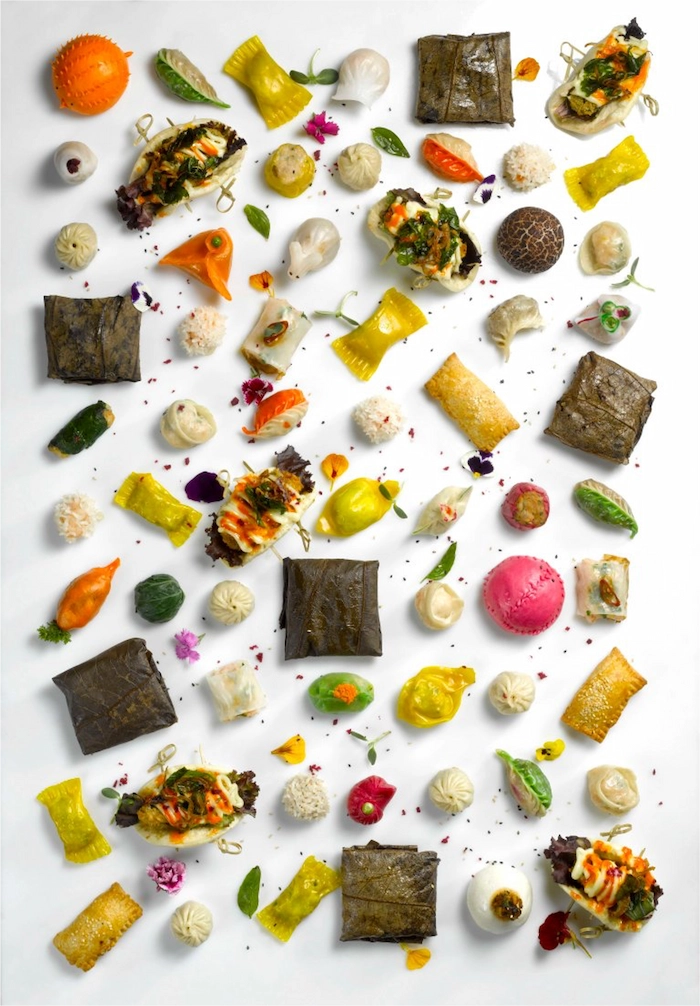
In this era of ongoing innovations where the food scene in Delhi is at its all-time high, packaged food companies are not the ones to stay behind. As India went into the coronavirus lockdown in March, the first thing every food enthusiast in New Delhi was dying to recreate was street style momos. Prasuma Momos, a fairly young company in the ready- to-eat market (since 2019), saw this as the perfect marketing opportunity for their products. Almost everyone on my Instagram was buying these to satisfy their street food cravings.
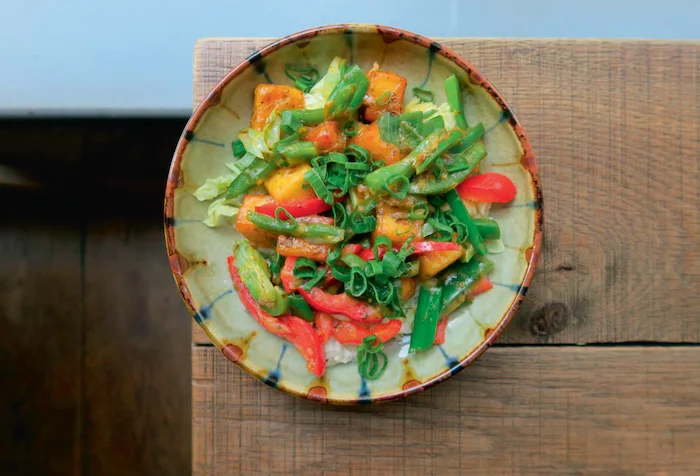
The Status Abroad
Curious about the international presence of this divine concoction, I decided to check London’s food scene for any interesting insights. Momos are predominantly served at small, hole in the wall Himalayan restaurants that have not yet earned a website/newspaper article of their own. As for Indo-Chinese food, it has found a place in the ‘street food’ menus of some Indian restaurants such as Roti Chai, that offers dishes such as Chilli Paneer Salad, Schezwan Aloo (Potato) and Delhi Live which does a Delhi based main menu.
Similarly, for Paris, a handful of Indian restaurants serve sub-decent Chindian food but none of them specialise in it. Momos remain restricted to the menus of Tibetan and Nepalese restaurants exclusively and often only available in their authentic form, not covered in a blend of spicy sauces or stuffed with many vegetarian fillings. The concept of Pan-Asian restaurants remains alien to the foodscape of these world capitals and understandably so. More Chinese, Thai, Japanese people reside in these cities than in all of India combined so they have stuck to the authentic recipes without needing much fusion with Indian cuisine or needing a single establishment to combine all these under one roof. Nonetheless, the number of Indian expats in these cities is increasingly becoming sizeable enough to represent a market for such food.
I wonder, if a chain like Wow Momo! would consider going international to cater to these consumers. This would represent a profitable opportunity as Indo-Chinese food remains widely untapped across most of the western world while more and more Indians set up camp in these countries and foodies increasingly become more experimental and open- minded.
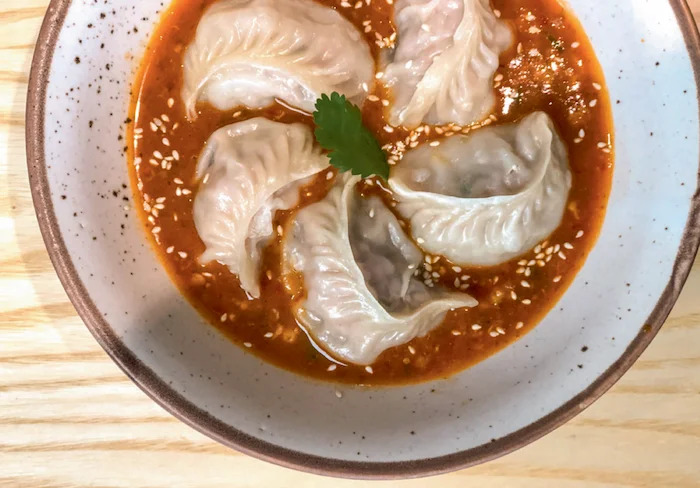
are the new rage in New Delhi


